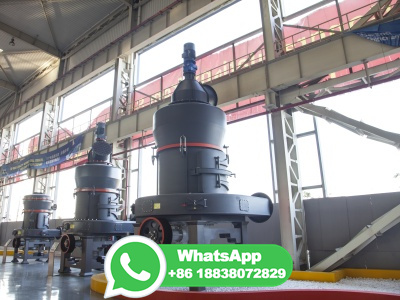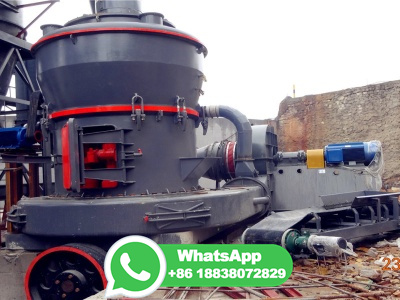
Mining Coal. Coal is extracted by two principal methods, of which there are many variants: surface mining or subsurface mining. Surface mining uses large machines to remove the soil and layers of rock known as overburden to expose coal seams that are close to the Earth's surface (figure (PageIndex{4})).Strip mining is a type of surface mining in which overburden is sequentially removed ...
WhatsApp: +86 18203695377
With more heat, time, and pressure, the kerogen underwent a process called catagenesis, and transformed into hydrocarbons. Hydrocarbons are simply chemicals made up of hydrogen and carbon. Different combinations of heat and pressure can create different forms of hydrocarbons. Some other examples are coal, peat, and natural gas.
WhatsApp: +86 18203695377
Plant matter It is generally accepted that most coals formed from plants that grew in and adjacent to swamps in warm, humid regions. Material derived from these plants accumulated in lowlying areas that remained wet most of the time and was converted to peat through the activity of microorganisms.
WhatsApp: +86 18203695377
ARTICLE Coal Coal is a nonrenewable fossil fuel that is combusted and used to generate electricity. Mining techniques and combustion are both dangerous to miners and hazardous to the environment; however, coal accounts for about half of the electricity generation in the United States. Grades 9 12 Subjects
WhatsApp: +86 18203695377
Coal is a black or brownishblack sedimentary rock that can be burned for fuel and used to generate is composed mostly of carbon and hydrocarbons, which contain energy that can be released through combustion (burning). Coal is the largest source of energy for generating electricity in the world, and the most abundant fossil fuel in the United States.
WhatsApp: +86 18203695377
Coking. Coking coal is an essential raw material for the production of iron and steel. Coke is a solid carbonaceous residue formed from coking coal (a lowash, lowsulphur bituminous coal, also known as metallurgical coal), which is used in make steel and other iron products [].Coke is produced by burning coal at temperatures up to 1000 °C in the absence of oxygen to remove the volatile ...
WhatsApp: +86 18203695377
Formation of Coal. Coalification is a process in which dead matters like plants and vegetation convert into coal over a prolonged period of time. In the past geological times, the Earth was covered with dense forests, especially in the wetland areas. ... It also gives a fair idea about the nature of coal. The airdried basis on the ovendried ...
WhatsApp: +86 18203695377
Crude oil, coal and gas are fossil fuels close fossil fuel Natural, finite fuel formed from the remains of living organisms, eg oil, coal and natural gas.. They were formed over millions of years ...
WhatsApp: +86 18203695377
How coal is formed. Coal is formed when dead plant matter submerged in swamp environments is subjected to the geological forces of heat and pressure over hundreds of millions of years. Over time, the plant matter transforms from moist, lowcarbon peat, to coal, an energy and carbondense black or brownishblack sedimentary rock.
WhatsApp: +86 18203695377
The process that microbes use to create a methane precursor molecule from coal. Anaerobic microbes live in the pore spaces between coal. They produce enzymes that they excrete into the pore space ...
WhatsApp: +86 18203695377
Coal is a combustible black or brownishblack sedimentary rock, formed as rock strata called coal is mostly carbon with variable amounts of other elements, chiefly hydrogen, sulfur, oxygen, and nitrogen. Coal is a type of fossil fuel, formed when dead plant matter decays into peat and is converted into coal by the heat and pressure of deep burial over millions of years.
WhatsApp: +86 18203695377
Fossil fuels are made from decomposing plants and animals. These fuels are found in Earth's crust and contain carbon and hydrogen, which can be burned for energy. Coal, oil, and natural gas are examples of fossil fuels. Coal is a material usually found in sedimentary rock deposits where rock and dead plant and animal matter are piled up in layers. More than 50 percent of a piece of coal's ...
WhatsApp: +86 18203695377
In the coalification process, the coal rank increases from lignite to anthracite, as shown in Figure Coal rank is useful in the market, because it is a quick and convenient way to describe coal without a detailed analysis sheet. A more detailed description of coal rank is shown in Tables and
WhatsApp: +86 18203695377
Petroleum is a fossil fuel that naturally occurs in the liquid form created by the decomposition of organic matter beneath the surface of the earth millions of years ago. These fossil fuels are then refined into usable substances such as petrol, kerosene, etc. It is formed by the combination of hydrocarbons and other substances, mainly sulphur.
WhatsApp: +86 18203695377
The term "fossil fuel" applies to organic material deposits that can burn, thus producing energy. One such fuel is coal, which is the solid altered remains of plant material, while oil and gas are the liquid and gaseous remains of various organic or inorganic sources. Standard thinking requires long ages for their origin. For decades it has been taught that dead plants accumulate in the ...
WhatsApp: +86 18203695377
There are four stages in the coal formation. They are peat, lignite, bituminous and anthracite. These stages depend upon the conditions to which the plant remains are subjected after they were buried. Greater the pressure and heat, the higher the rank of coal. Higherranking coal is denser and contains less moisture and gases and has a higher ...
WhatsApp: +86 18203695377
Module 35 Review. Term. 1 / 10. Describe the process of coal formation, including the different types and their properties. Click the card to flip 👆. Definition. 1 / 10. Coal is preserved remains of trees, ferns, and plant materials. Types of coal are lignite (least deep), bituminous (middeep), and anthracite (most deep).
WhatsApp: +86 18203695377
A balanced carbon cycle is essential. Carbon is a major component in carbohydrates, fats and proteins. The carbon cycle involves the exchange of carbon between living organisms (biotic) and their ...
WhatsApp: +86 18203695377
Solution Formation of coal : Coal is formed from the remains of the plants that existed in swampy forests some 200—300 million years ago. These plants got buried under the Earth due to some geological changes. As more and more materials piled on top of them, they were compressed. Coal is extracted from mines.
WhatsApp: +86 18203695377
There are four major types (or "ranks") of coal. Rank refers to steps in a slow, natural process called "coalification," during which buried plant matter changes into an ever denser, drier, more carbonrich, and harder material. The four ranks are: Anthracite: The highest rank of coal. It is a hard, brittle, and black lustrous coal, often referred to as hard coal, containing a high ...
WhatsApp: +86 18203695377
Fossil fuels are nonrenewable sources of energy formed from the organic matter of plants and microorganisms that lived millions of years ago. The natural resources that typically fall under this category are coal, oil (petroleum), and natural gas. This energy (and CO 2) was originally captured via photosynthesis by living organisms such as plants, algae, and photosynthetic bacteria.
WhatsApp: +86 18203695377
Carbonisation is the process when the dead organic matter of plant and animal remains buried deep under the earth's sediments transform into coal under conditions of high temperature and involves bacterial decomposition due to anaerobic conditions beneath the earth's crust. Answer verified by Toppr.
WhatsApp: +86 18203695377
Instead of releasing carbon and oxygen into the air, it created perfect conditions for coal formation from these fallen trees. This is because all the carbon remains in the wood to become the prime ingredient in hydrocarbons. So, for 60 million years, this natural process of laying down vast swamp forests under sediment continued.
WhatsApp: +86 18203695377
1) Formation in Earth's Mantle. Geologists believe that the diamonds in all of Earth's commercial diamond deposits were formed in the mantle and delivered to the surface by deepsource volcanic eruptions. These eruptions produce the kimberlite and lamproite pipes that are sought after by diamond prospectors. Most of these pipes do not contain ...
WhatsApp: +86 18203695377
Coal type and grade, which describe the coal composition, are the key characteristics of a coal and vary with the increase in coal rank. Because coal has different uses and properties, it must be characterized before it is used, whether as a single or blended coal, to determine its quality and to predict its technological behavior with a view ...
WhatsApp: +86 18203695377
The origin of coal lies in a set of circumstances that prevailed at the time of original peat swamp formation and subsequently during the process of coalification (maturing) through time, temperature and pressure. The lithology of coal as defined by the American Society for Testing and Materials (ASTM) is 'the term used to describe the coal ...
WhatsApp: +86 18203695377
Photosynthesis by land plants, bacteria, and algae converts carbon dioxide or bicarbonate into organic molecules. Organic molecules made by photosynthesizers are passed through food chains, and cellular respiration converts the organic carbon back into carbon dioxide gas. A drawing of mountains, rocks and the ocean titled the carbon cycle.
WhatsApp: +86 18203695377
The coal formation process involves the burial of peat, which is made of partly decayed plant materials, deep underground. The heat and pressure of burial alters the texture and increases the carbon content of the peat, which transforms it into coal, a type of sedimentary rock. This process takes millions of years. Types, or "ranks," of coal are determined by carbon content. There are four ...
WhatsApp: +86 18203695377
Chemistry Coal and Petroleum Formation Of Fossil Fuels Formation of Coal How is Coal Formed? Coal is fossil fuel or fuel that comes from the remains of prehistoric plants or animals. The formation of coal occurs over millions of years via a process known as carbonation.
WhatsApp: +86 18203695377